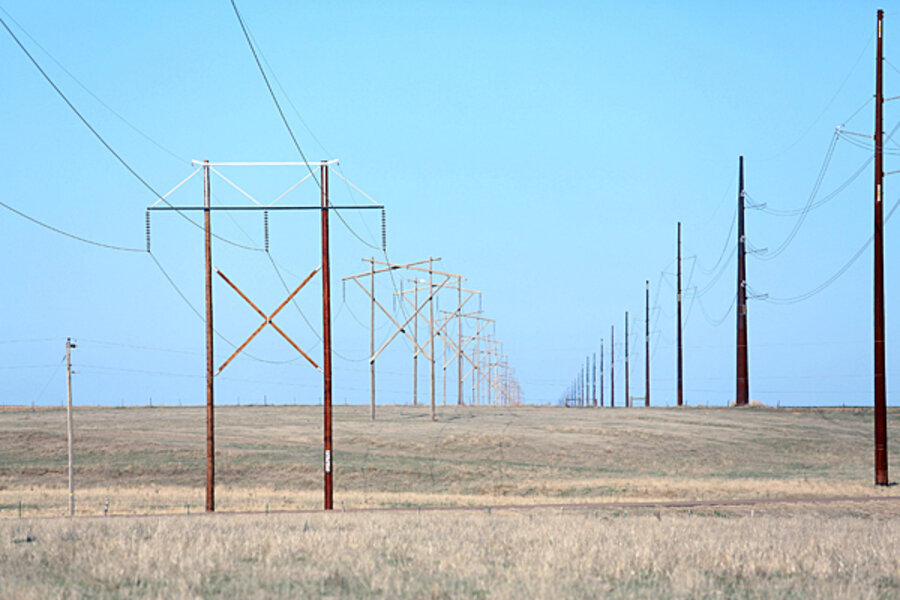Can electric utilities innovate?
Loading...
Last year Maryland Governor Martin O’Malley asked the Energy Future Coalition (EFC), a project of the UN Foundation, to design a multi-faceted and comprehensive pilot-project plan for the state’s utilities. EFC assembled a stakeholder group including two Maryland utilities, PEPCO and Baltimore Gas & Electric Company (BGE), to submit ideas for pilot projects that could build a “better utility future.” The resulting report, “Utility 2.0: Piloting the Future for Maryland’s Electric Utilities and their Customers,” takes a different path than typical electricity utility reform strategies. Rather than dictating a single pathway for higher renewable penetration, the report calls for a number of pilot projects designed to create an entirely new grid system that advances innovation, resilience, reliability, flexibility, and financial viability for customers.
Electric utilities are usually characterized as ‘anti-innovators’ as their ultimate goal is only to sell electricity at the lowest cost and highest reliability. Integrating and transmitting distributed renewable energy presents a challenge to the standard operation of utilities due to intermittency issues, distribution, and new infrastructure needs.
Conventional policy suggests that utilities must be regulated into conforming to a renewable future. The Maryland study indicates an alternative path for implementing complementary policies necessary for bringing energy innovation to the utility system.
The study recommends five key aspects of a successful future utility system:
- Aligning utility compensation with customers’ changing needs and values.
- Supporting utility investment in an interoperable, integrated suite of smart-grid technologies, not only on its own system, but on the premises of willing customers.
- Allowing utilities to finance and customers to repay system-related and efficiency investments on their bills.
- Optimizing automated system sectionalizing and reclosing for reliability and resiliency, and facilitating microgrids for areas where customers could safely provide their own energy during an outage.
- Facilitating electric vehicle deployment and utility benefit from utility-controlled vehicle battery changing.
These desired outcomes take into account the needs of both customers and utilities, and provides the industry and energy consumers with long-term goals built off of current utilities’ strengths and weaknesses. The 29 pilot projects fit into six categories of implementation: reliability and resiliency, residential customer optionality, larger customer optionality, utility system upgrades, utility business model adjustments, and regulatory model adjustments. Some of the suggested pilot projects involve policy and regulation changes, while others suggest installation and testing of new technologies including readable controls, flywheel storage devices, and back-stop power microgrids.
For example, one of the pilot projects encourages the adoption of an electric vehicle incentive program, in which utilities offer a cost contribution to EV purchasers, who in exchange agree to timed vehicle charging. This program would allow utilities to improve voltage regulation and increase grid reliability. Another pilot project asks utilities to install equipment that can section off parts of the grid the exhibit failures so that the failure doesn’t cascade throughout the rest of the system, which could enhance grid resilience in the event of serious weather conditions – BGE has already started to implement this as a pilot project, and suggests expanding the pilot as part of the study.
The project recommendations are unique for a number of reasons. Utility 2.0 goes far beyond simply pointing out that integrating renewable energy on the grid will be problematic within the conventional utility model. Instead of calling for more utility regulation, the study suggests several thorough policy and technology alternatives to the status quo, lists which stakeholders should be involved in broader implementation in the future of such policy and technology changes in the future, and how changes to the system will affect all involved parties.
Correspondingly, the study strays from modeling exactly how the state’s utilities should function and instead suggests how they could function, enabled by additional policies and technology innovation. Many current studies of clean technology integration focus much more on directing pathways to achieve an end goal, rather than encouraging innovation within the system to allow for the most optimal pathway or pathways to develop themselves. By maintaining a diverse portfolio of policy and technology suggestions and offering direct but inclusive solutions to implementation, the study emphasizes the benefits of a multi-faceted approach to rethinking, rather than simply updating, the nation’s utility system.
It might be challenging to encourage utilities to re-envision their model, but under the circumstances of the growing clean tech industry, this rethinking is necessary. The pilot projects will supply utilities with real data and information on how these changes can be implemented in a successful way – one that improves the current system without separating them from the process. The study offers the state of Maryland an opportunity to lead the country in reevaluating the role of utilities in the transmission of electricity – but it’s certainly a strategy that states country-wide could model as well.







